“The smallest details often reveal the most about a home’s character.”
Imagine entering a luxurious bathroom where every element exudes sophistication and attention to detail. The tiles are a masterpiece, their intricate patterns and rich hues captivating the eye. But what truly sets them apart is the grout – that unsung hero that binds the tiles together, creating a harmonious symphony of design and functionality.
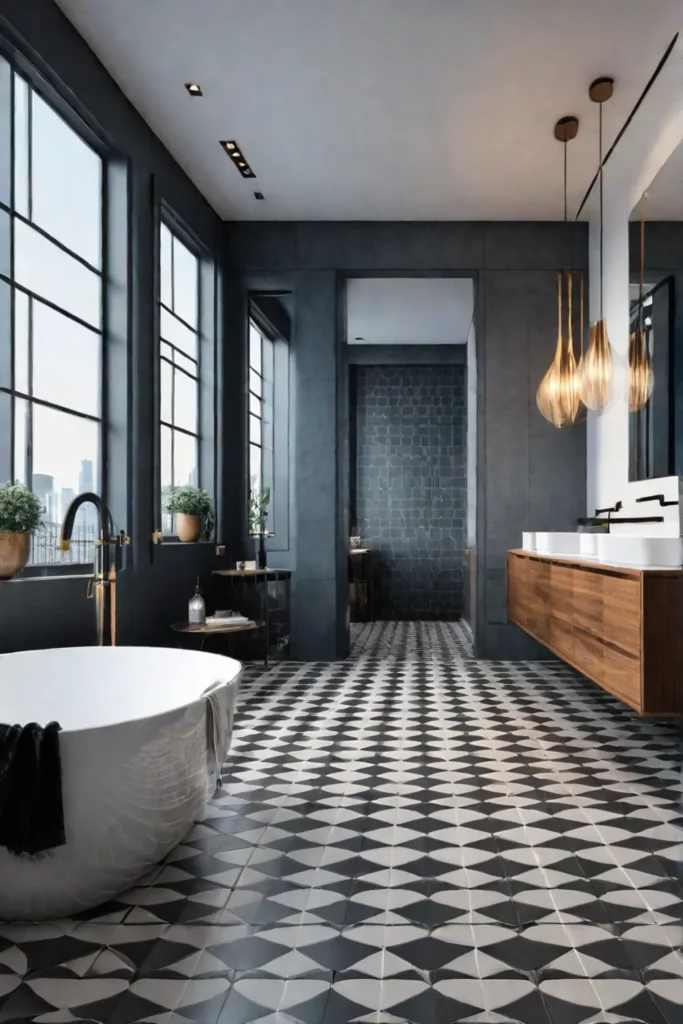
Grout is often overlooked in bathroom renovations, yet it plays a pivotal role in the overall aesthetic and durability of tiled floors. From a rustic lodge’s rugged charm to an urban oasis’s sleek modernity, the right grout can transform your bathroom into a sanctuary that reflects your style.
Exploring the Grout Terrain: Finding the Perfect Fit
Grout is more than just a functional necessity; it’s a canvas upon which you can unleash your creativity and elevate your bathroom’s design. As you embark on your journey to select the ideal grout, consider the various options available, each with unique strengths and applications.
Cementitious Grout: The Reliable Workhorse
Cementitious grout, a blend of cement, sand, and water, is the most common and affordable for bathroom floors. Its versatility complements various tile types, from classic ceramics to natural stone. While it may be more prone to staining and require more frequent sealing than other grout types, cementitious grout remains a trusted ally for those seeking a timeless and budget-friendly option.
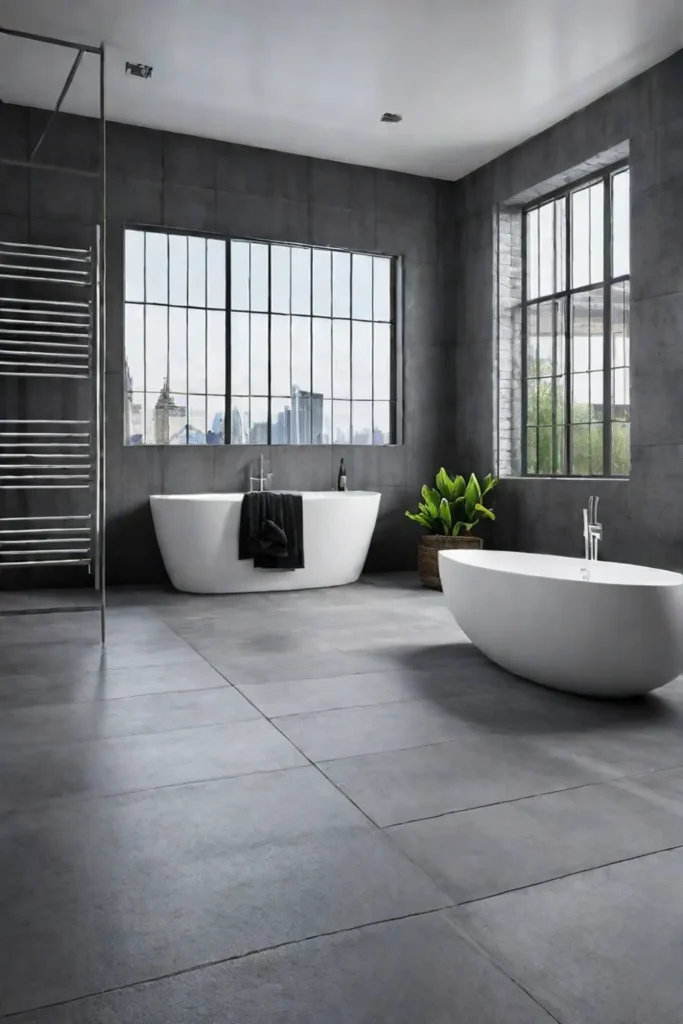
Epoxy Grout: The Stain-Resistant Warrior
For those seeking unparalleled durability and stain resistance, epoxy grout is a formidable contender. This two-part system, consisting of a resin and a hardener, is designed to withstand the rigors of high-traffic areas and moisture-rich environments, making it an excellent choice for bathroom floors. While its price tag may be higher than its cementitious counterpart, epoxy grout’s unparalleled resilience ensures a long-lasting, pristine appearance.
Sanded Grout: The Sturdy Stronghold
When it comes to wider grout joints, sanded grout reigns supreme. Its sand particles provide exceptional strength and stability, making it ideal for larger tile sizes and high-traffic areas. While it may require more elbow grease during application and cleaning, sanded grout’s rugged tenacity ensures your bathroom floor remains a fortress against the elements.
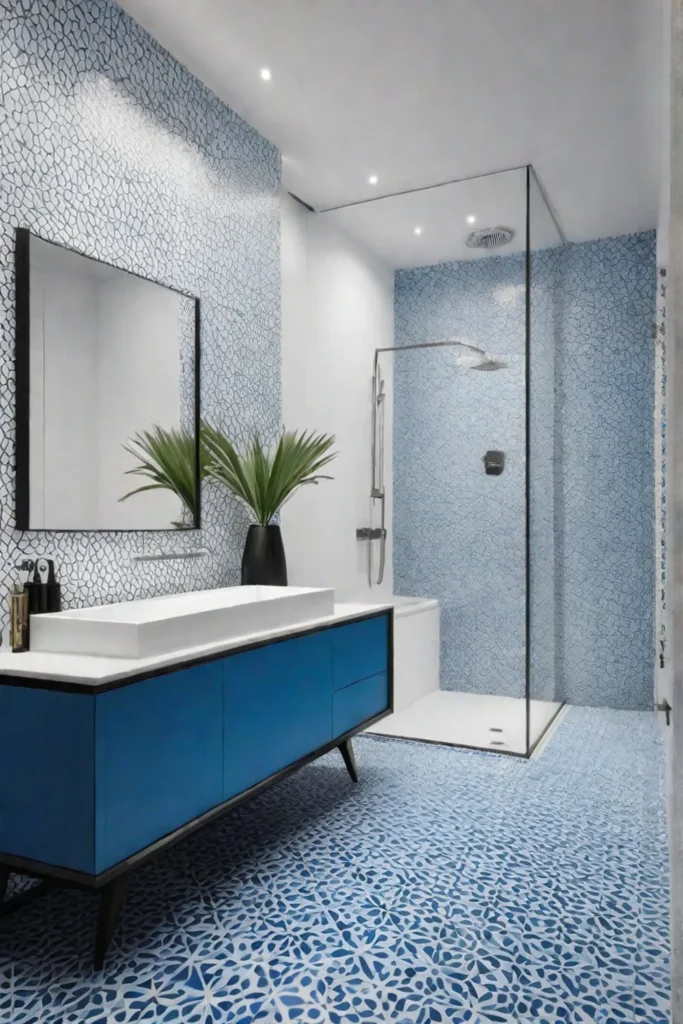
Unsanded Grout: The Delicate Virtuoso
For those seeking a more refined touch, unsanded grout is the virtuoso of narrow grout joints. Without the added sand particles, this grout glides smoothly into even the most intricate spaces, creating a seamless canvas for your smaller tile sizes. While it may not boast the brawn of its sanded counterpart, unsanded grout’s delicate grace ensures a flawless finish that complements the most intricate tile designs.
Unleashing the Power of Color: A Palette for Every Personality
Once you’ve selected the grout type that suits your needs, it’s time to unleash the true artistry of your bathroom design through color. From bold and daring to subtle and serene, the right grout color can transform your bathroom into a masterpiece that reflects your unique personality.
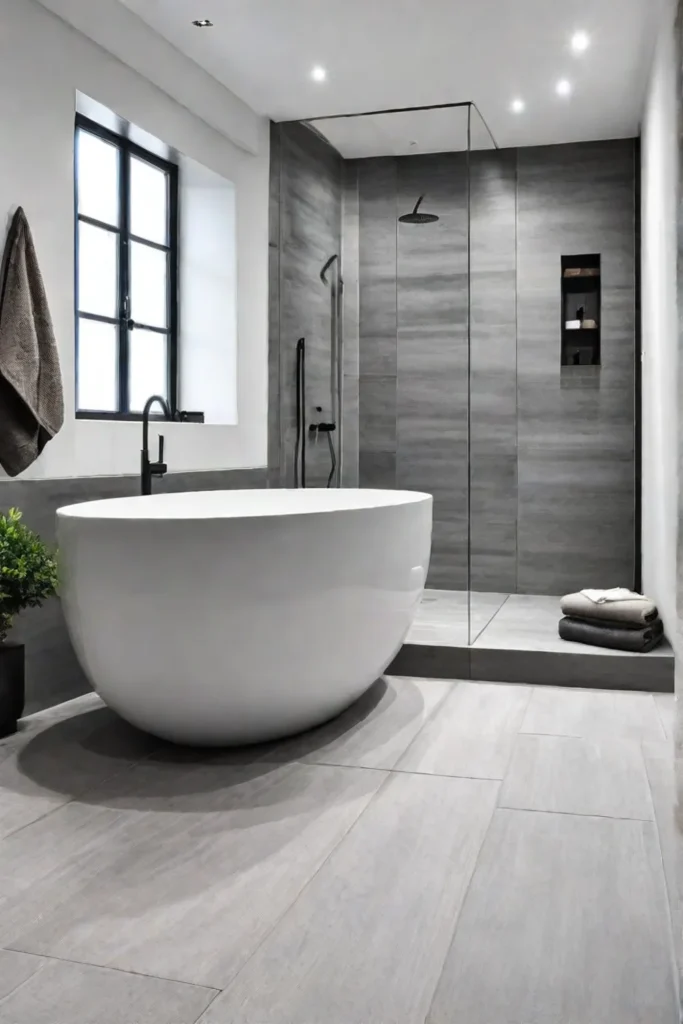
Neutral Tones: The Timeless Elegance
For those seeking a timeless and versatile aesthetic, neutral tones such as white, beige, and gray offer a clean, minimalist canvas that complements a wide range of tile colors and styles. These hues create a sense of tranquility and sophistication, allowing your tiles to take center stage while maintaining a cohesive and harmonious design.
Contrasting Colors: The Bold Statement
A contrasting grout color can add a striking, geometric flair to your bathroom if daring. Imagine the visual impact of a rich, dark grout accentuating light-colored tiles or a vibrant pop of color breathing life into a more muted tile palette. This bold approach is perfect for those seeking to make a statement and create a truly unique and unforgettable space.

Matching Colors: The Seamless Symphony
Consider matching your grout color to your tiles for a more subtle and cohesive look. This approach creates a seamless, unified appearance, allowing your tiles’ intricate patterns and textures to take center stage. Whether you opt for a warm, earthy tone or a cool, contemporary hue, matching grout colors can create a sense of spaciousness and continuity, particularly in smaller bathrooms.
Sealing the Deal: Protecting Your Investment
While grout may be the unsung hero of your bathroom design, protecting this hardworking element from the ravages of time and moisture is essential. Sealing your grout is crucial in preserving its appearance and preventing issues such as mold, mildew, and staining.
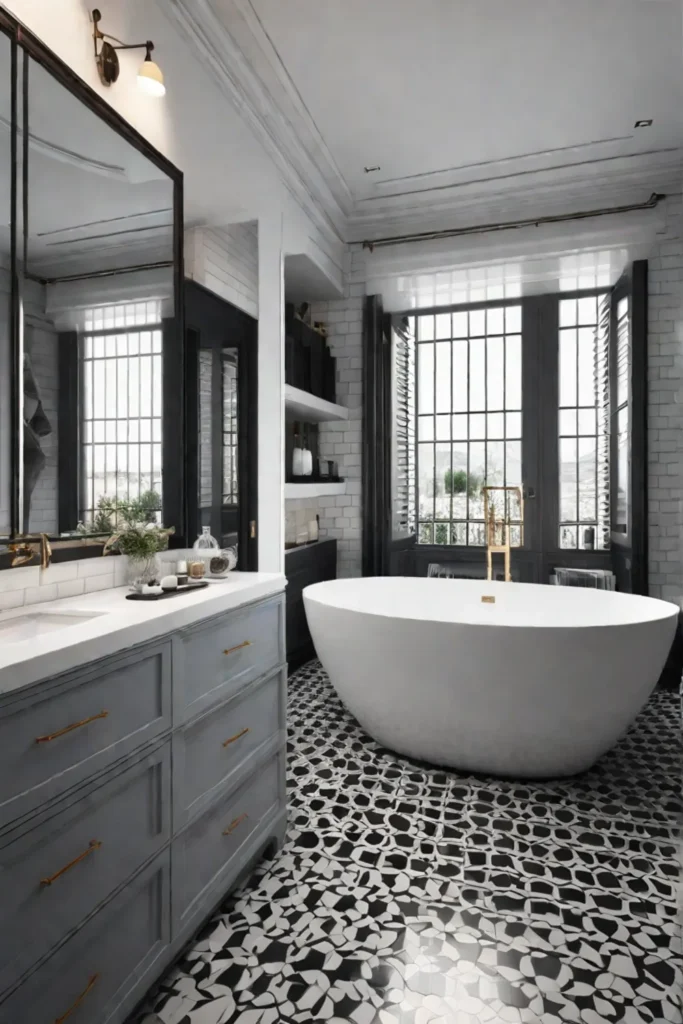
Sealed grout is more resistant to moisture and bacteria, ensuring that your bathroom floor remains pristine for years. The sealing process is straightforward: after thoroughly cleaning the grout, apply a high-quality sealer using a grout sealer brush or a clean cloth, allowing it to dry according to the manufacturer’s instructions. Consider resealing your grout every few years or as needed for optimal protection.
Grout as a Design Element: Elevating Your Bathroom’s Aesthetic
While grout may seem like a supporting player in your bathroom’s design, it can also be a powerful tool for creating visual interest and enhancing the overall aesthetic. With creativity and an eye for detail, you can transform your grout from a functional necessity into a true design element.
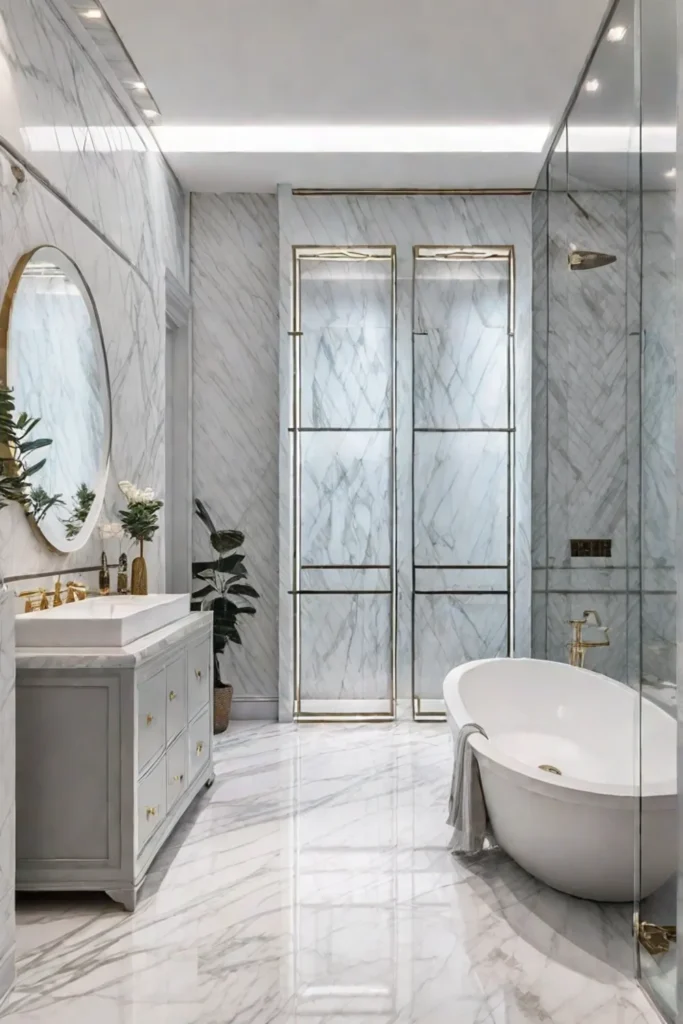
Patterns and Geometric Flair
You can create striking patterns and geometric designs that add depth and dimension to your bathroom floor by strategically combining different grout colors. Imagine a bold, contrasting grout color outlining a border or creating a mesmerizing herringbone pattern. This approach adds visual interest and showcases your unique sense of style.
Coordinating with Tile and Style
When selecting your grout color, consider your bathroom’s overall design style and choose a hue that complements and enhances the aesthetic. A warm, earthy grout tone can create a cozy, inviting atmosphere for a rustic, lodge-inspired look. Conversely, a sleek, contemporary bathroom may benefit from a crisp, cool grout color accenting the clean lines and minimalist design.
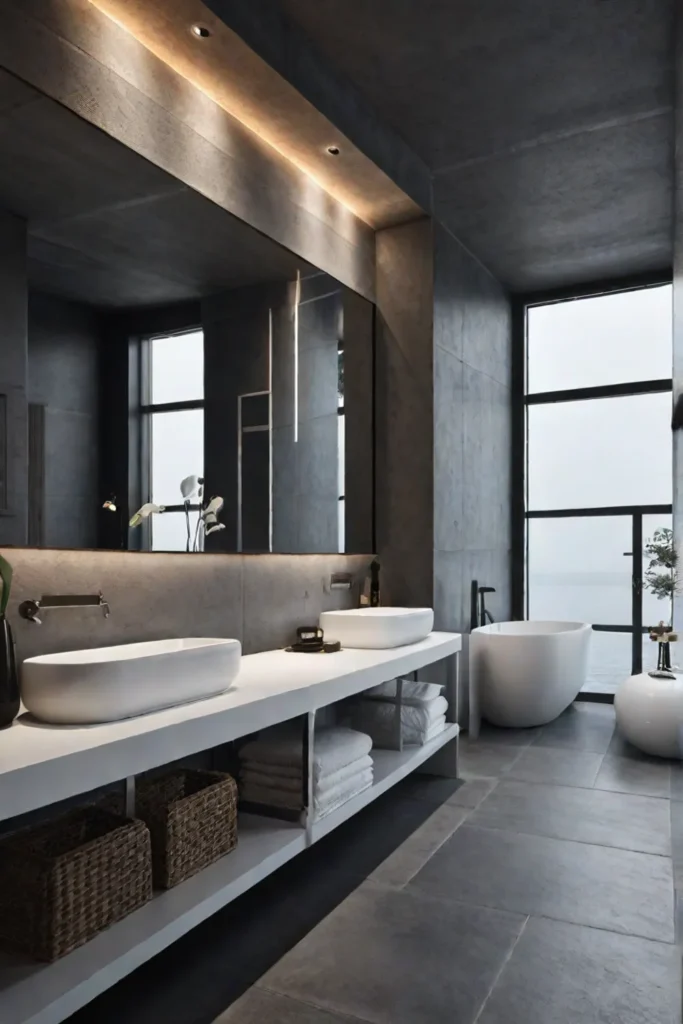
Showcasing Examples
To truly appreciate the power of grout as a design element, consider these inspiring examples:
- A white subway tile bathroom floor with charcoal gray grout creates a striking contrast and adds depth to the space.
- A rustic, reclaimed wood-look tile floor with warm, terracotta-colored grout evokes a cozy, cabin-like ambiance.
- A modern, geometric tile pattern with alternating grout colors creates a dynamic and visually captivating design.
Conclusion: Crafting Your Grout Masterpiece
As you embark on your journey to create the bathroom of your dreams, remember that grout is more than just a functional necessity – it’s a canvas upon which you can unleash your creativity and elevate your design to new heights. By carefully considering the grout type, color, sealing, and maintenance, you can transform your bathroom into a sanctuary that reflects your unique personality and style.
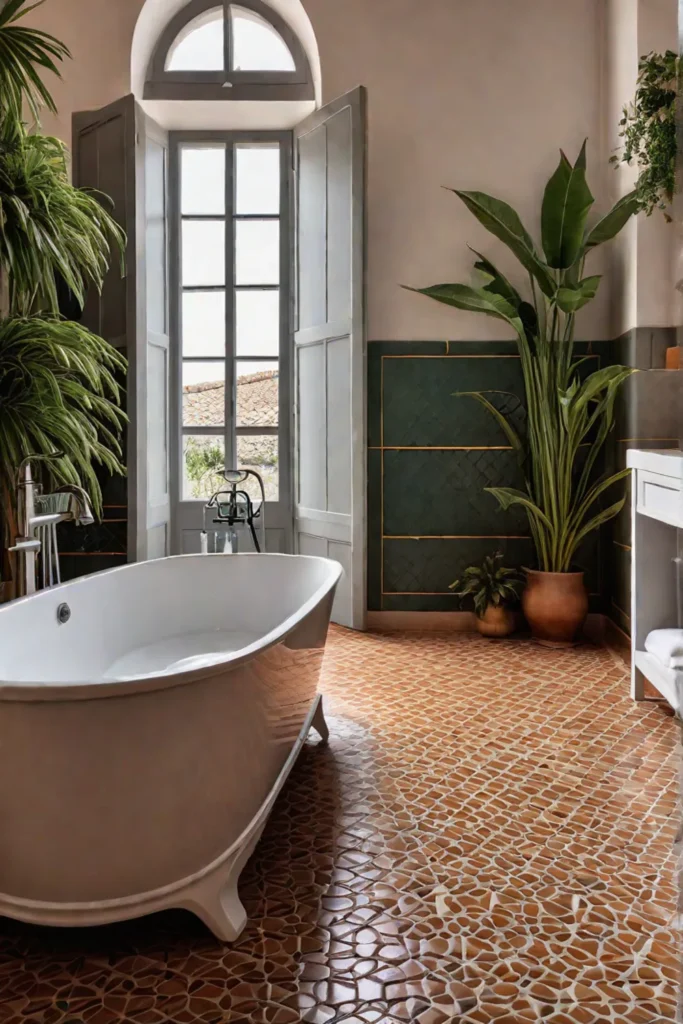
So, embrace the power of grout, and let it be the masterful stroke that brings your vision to life. Whether you opt for the timeless elegance of neutral tones or the bold statement of contrasting colors, the right grout choice will not only enhance the beauty of your tiles but also create a space that invites relaxation, rejuvenation, and a sense of pride in your home’s character.





